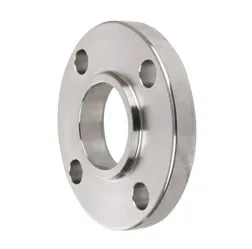-
Cangzhou Yulong Steel Co., Ltd.
-
Phone:
+86 13303177267 -
Email:
admin@ylsteelfittings.com
- English
- Arabic
- Italian
- Spanish
- Portuguese
- German
- kazakh
- Persian
- Greek
- French
- Russian
- Polish
- Thai
- Indonesian
- Vietnamese
- Zulu
- Korean
- Uzbek
- Hindi
- Serbian
- Malay
- Ukrainian
- Gujarati
- Haitian Creole
- hausa
- hawaiian
- Hebrew
- Miao
- Hungarian
- Icelandic
- igbo
- irish
- Japanese
- Javanese
- Kannada
- Khmer
- Rwandese
- Afrikaans
- Albanian
- Amharic
- Armenian
- Azerbaijani
- Basque
- Belarusian
- Bengali
- Bosnian
- Bulgarian
- Catalan
- Cebuano
- China
- China (Taiwan)
- Corsican
- Croatian
- Czech
- Danish
- Esperanto
- Estonian
- Finnish
- Frisian
- Galician
- Georgian
- Kurdish
- Kyrgyz
- Lao
- Latin
- Latvian
- Lithuanian
- Luxembourgish
- Macedonian
- Malgashi
- Malayalam
- Maltese
- Maori
- Marathi
- Mongolian
- Myanmar
- Nepali
- Norwegian
- Norwegian
- Occitan
- Pashto
- Dutch
- Punjabi
- Romanian
- Samoan
- Scottish Gaelic
- Sesotho
- Shona
- Sindhi
- Sinhala
- Slovak
- Slovenian
- Somali
- Sundanese
- Swahili
- Swedish
- Tagalog
- Tajik
- Tamil
- Tatar
- Telugu
- Turkish
- Turkmen
- Urdu
- Uighur
- Welsh
- Bantu
- Yiddish
- Yoruba

Jul . 29, 2024 19:51 Back to list
Understanding Pipe Fitting Techniques and Welding Methods for Efficient Pipeline Construction and Maintenance
Understanding Pipe Fitting and Welding An Essential Guide
Pipe fitting and welding are integral components of various industries, including construction, manufacturing, and energy. These practices are crucial for creating and maintaining pipelines that transport fluids and gases safely and efficiently. This article delves into the significance of pipe fitting and welding, the techniques involved, and the materials commonly used.
What is Pipe Fitting?
Pipe fitting is the process of assembling and installing piping systems to carry liquids, gases, and sometimes solids. It involves various components such as elbows, tees, reducers, and flanges, which allow for changes in direction, diameter, and connection points within the piping system. The primary objective of pipe fitting is to ensure that the systems are leak-proof, durable, and capable of withstanding the pressures and temperatures specific to their applications.
The process begins with careful planning and design, often leveraging computer-aided design (CAD) tools to create detailed schematic diagrams. Precise measurements and specifications are critical, as even minor deviations can lead to system failures. Pipe fitters must be well-versed in reading blueprints and understanding engineering principles to ensure that their installations meet industry standards and regulations.
Welding in Pipe Systems
Welding is a technique used to join two or more pieces of metal together, providing a strong and enduring bond that is essential in pipe fitting. Various welding methods exist, including arc welding, MIG (Metal Inert Gas) welding, TIG (Tungsten Inert Gas) welding, and more. Each method has its own advantages and is chosen based on factors like the type of material, thickness of the pipes, and environmental conditions.
The welding process typically involves preparation of the pipe ends to ensure a clean surface for a secure joint. This may include cutting, beveling, and cleaning the metals to remove any contaminants. Proper welding techniques are vital as they influence the strength and integrity of the joint. Factors like welding speed, temperature, and filler material must be closely monitored to produce high-quality welds.
pipe fitting and welding

Materials Used in Pipe Fitting and Welding
The choice of materials for pipe fitting and welding is paramount. Common materials include steel, stainless steel, copper, and plastic, each selected based on criteria such as the nature of the fluid being transported, temperature, and pressure requirements. For instance, stainless steel is often favored in systems that require corrosion resistance, while carbon steel is widely used for its strength and affordability.
Additionally, weld fillers must be compatible with the base materials to ensure a seamless bond. Maintenance of these materials is also crucial; regular inspections and testing can preclude failures caused by corrosion, fatigue, or other forms of deterioration.
Safety Considerations
Given the potential hazards associated with pipe fitting and welding—such as exposure to toxic fumes, heat, and physical injuries—safety protocols should always be a priority. Personal protective equipment (PPE) such as helmets, gloves, goggles, and protective clothing must be worn at all times. Moreover, adequate training for personnel helps to mitigate risks and ensure that procedures are followed diligently.
Conclusion
Pipe fitting and welding are essential skills that contribute significantly to the infrastructure and functionality of various industries. By employing best practices in planning, execution, and safety, professionals can create reliable systems that meet the demands of modern applications. As technologies evolve and industry standards become more stringent, ongoing education and adaptation will be key to excellence in this field. With the right foundation in pipe fitting and welding, the opportunities for innovation and efficiency are boundless.
Latest news
-
ANSI 150P SS304 SO FLANGE
NewsFeb.14,2025
-
ASTM A333GR6 STEEL PIPE
NewsJan.20,2025
-
ANSI B16.5 WELDING NECK FLANGE
NewsJan.15,2026
-
ANSI B16.5 SLIP-ON FLANGE
NewsApr.19,2024
-
SABS 1123 FLANGE
NewsJan.15,2025
-
DIN86044 PLATE FLANGE
NewsApr.19,2024
-
DIN2527 BLIND FLANGE
NewsApr.12,2024
-
JIS B2311 Butt-Welding Fittings LR/SR 45°/90° /180°Seamless/Weld
NewsApr.23,2024











